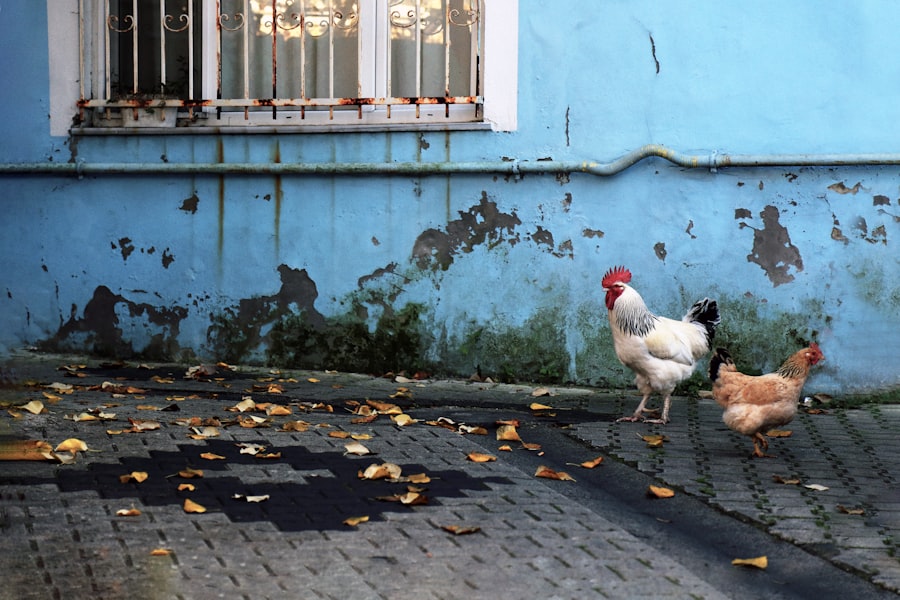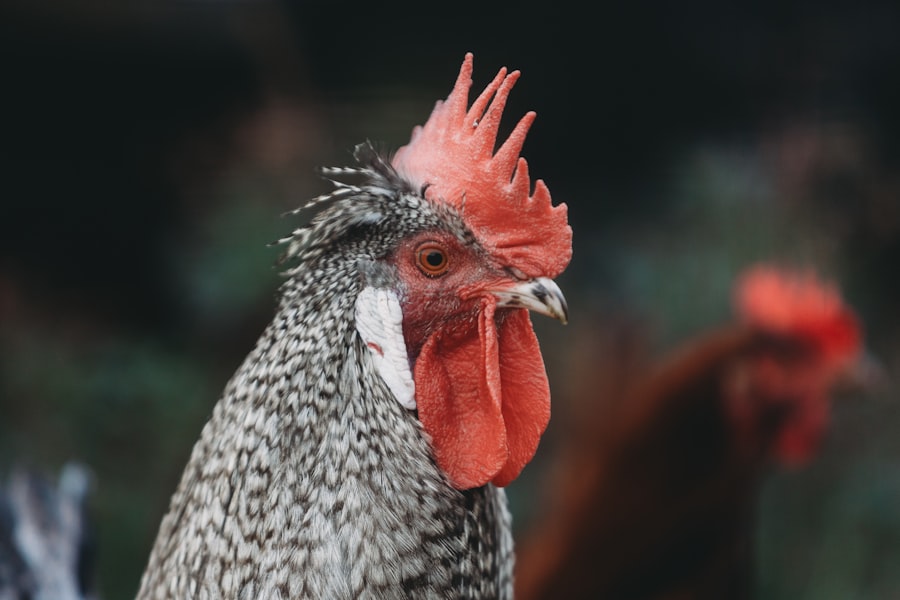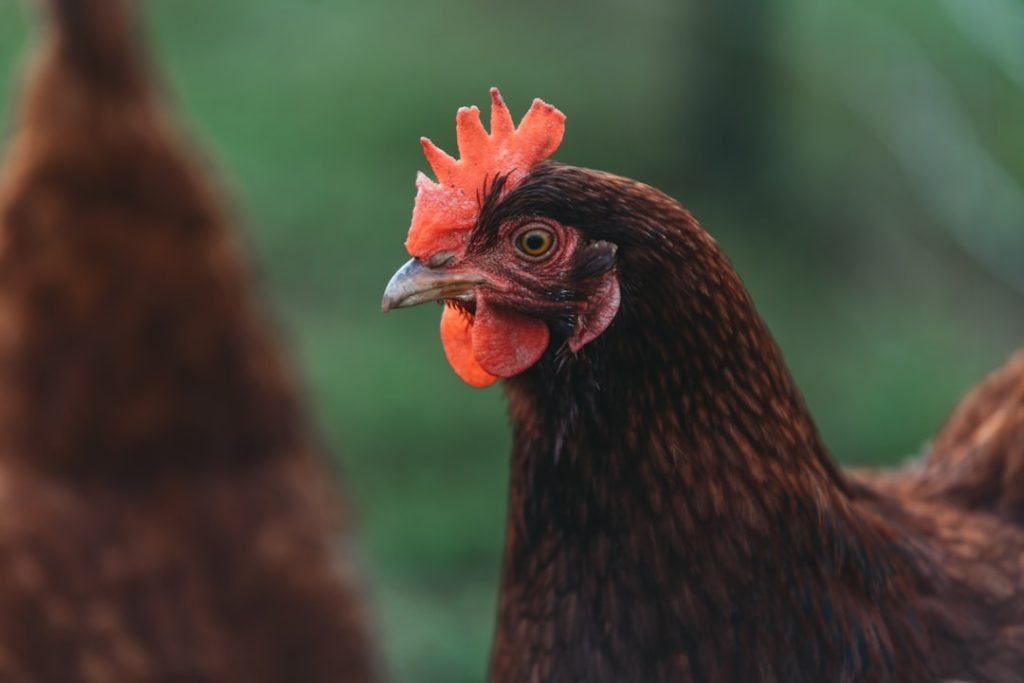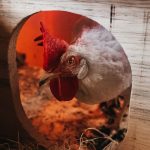Chickens are complex animals with intricate behaviors that are often underappreciated. Understanding their conduct is essential for ensuring their welfare, particularly when managing their response to environmental factors like heat. These birds are social creatures that live in flocks with a hierarchical structure.
They communicate through various vocalizations and body language, and possess a strong self-preservation instinct. To cope with heat, chickens exhibit specific behaviors such as panting and seeking shade to regulate their body temperature. Comprehending these actions allows for better support of their health and well-being.
Foraging is a significant behavior in chickens, as they dedicate considerable time to pecking and scratching the ground for food. This natural activity is crucial for their physical and mental stimulation, while also helping regulate body temperature by keeping them active. Chickens also have a strong roosting instinct at night, which protects them from predators and allows for rest and energy conservation.
Recognizing these innate behaviors is crucial for providing appropriate care and support, especially when managing their response to environmental stressors like heat.
Table of Contents
Key Takeaways
- Chickens exhibit various behaviors to communicate their needs and emotions.
- Panting is a physiological response in chickens to regulate body temperature.
- Environmental factors such as high temperature and humidity can increase chicken panting.
- Signs of overheating in chickens include open beaks, wings spread, and reduced activity.
- Providing shade, proper ventilation, and access to cool water can help chickens stay cool and healthy.
The Physiology of Chicken Panting
How Chickens Pant to Cool Down
Panting is a common behavior in chickens, especially when they are trying to cool down in hot weather. When chickens pant, they open their beaks and breathe rapidly, which helps them release excess heat from their bodies. This process is similar to how dogs pant to cool down, as it allows moisture to evaporate from the respiratory system, which in turn helps lower their body temperature.
The Importance of Panting in Chickens
Chickens do not have sweat glands like humans, so panting is one of their primary methods for thermoregulation. When chickens pant, they also increase their respiratory rate, which can put additional strain on their cardiovascular system.
Monitoring Chickens for Heat Stress
This is why it’s important to monitor chickens closely during hot weather, as excessive panting can be a sign of overheating or heat stress. Understanding the physiology of chicken panting can help us recognize when they may be struggling to cope with high temperatures and take appropriate measures to support their well-being.
Environmental Factors that Affect Chicken Panting

Several environmental factors can affect how chickens respond to heat and the frequency of their panting behavior. The most obvious factor is the temperature itself, as chickens are more likely to pant when the ambient temperature is high. Humidity also plays a significant role, as high humidity can make it more difficult for chickens to cool down through panting and evaporation.
Air circulation is another important factor, as stagnant air can make it harder for chickens to release heat from their bodies. The type of housing and bedding used for chickens can also impact their ability to cope with heat. For example, a well-ventilated coop with appropriate bedding can help regulate the temperature and humidity levels, making it easier for chickens to stay cool.
On the other hand, overcrowded or poorly ventilated coops can exacerbate heat stress and increase the likelihood of panting. Understanding these environmental factors is crucial for creating a comfortable and safe living environment for chickens, especially during hot weather.
Signs of Overheating in Chickens
Recognizing the signs of overheating in chickens is essential for preventing heat stress and supporting their health. In addition to panting, other signs of overheating may include lethargy, reduced appetite, drooping wings, and pale combs and wattles. Chickens may also seek out shady areas or lie flat on the ground in an attempt to cool down.
It’s important to monitor chickens closely during hot weather and be aware of these signs so that appropriate measures can be taken to help them stay cool. Another important indicator of overheating in chickens is a decrease in egg production. High temperatures can disrupt the laying cycle and cause hens to temporarily stop laying eggs.
This is a natural response to stress, as the energy required for egg production is redirected towards thermoregulation and survival. By recognizing these signs of overheating, we can take proactive steps to support the well-being of our chickens and prevent heat-related health issues.
Ways to Help Chickens Keep Cool
There are several ways to help chickens keep cool during hot weather. Providing access to shade is crucial, as it allows chickens to escape direct sunlight and lower their body temperature. This can be achieved by creating shaded areas in the chicken run or coop using tarps, umbrellas, or natural vegetation.
Additionally, ensuring good air circulation in the coop can help reduce heat stress by allowing hot air to escape and cooler air to enter. Another important way to help chickens keep cool is by providing access to fresh, clean water at all times. Hydration is essential for regulating body temperature and preventing heat stress, so it’s important to regularly check water sources and refill them as needed.
Adding electrolytes to the water can also help replenish essential nutrients lost through panting and sweating. Additionally, offering frozen treats such as fruits or vegetables can provide chickens with a refreshing source of hydration and help them cool down.
The Importance of Providing Shade and Water for Chickens

Shade: A Refuge from the Sun
Providing shade and water for chickens is essential for supporting their health and well-being, especially during hot weather. Without access to shade, chickens are at risk of overheating and developing heat-related health issues such as heat stroke. Shade provides a refuge from direct sunlight and allows chickens to regulate their body temperature more effectively.
Preventing Dehydration and Heat Stress
It also helps reduce the risk of dehydration by preventing water evaporation from the skin and respiratory system. Similarly, access to clean water is crucial for preventing heat stress in chickens. Dehydration can quickly become a serious issue during hot weather, so it’s important to ensure that chickens have constant access to fresh water.
Ensuring Adequate Hydration
Regularly cleaning water containers and providing multiple sources of water can help encourage adequate hydration. Additionally, adding electrolytes to the water can help replenish essential nutrients lost through panting and sweating. By prioritizing shade and water provision, we can help ensure that our chickens stay healthy and comfortable during periods of high temperatures.
Understanding and Supporting Chicken Health
In conclusion, understanding chicken behavior and physiology is crucial for supporting their health, especially when it comes to managing their response to environmental stressors such as heat. By recognizing the signs of overheating in chickens and understanding the ways they regulate their body temperature through panting, we can take proactive measures to help them stay cool and comfortable during hot weather. Providing access to shade and clean water is essential for preventing heat stress and supporting their well-being.
Creating a comfortable living environment for chickens involves considering various environmental factors such as temperature, humidity, air circulation, and housing conditions. By addressing these factors and implementing strategies to help chickens keep cool, we can minimize the risk of heat-related health issues and ensure that our feathered friends thrive even in challenging weather conditions. Ultimately, prioritizing the well-being of our chickens through understanding their behavior and providing appropriate support is essential for responsible poultry care.
If you’re wondering if chickens pant to keep cool, you may also be interested in learning about the best chicken coop door size for your flock. Check out this article to ensure your chickens have the right amount of ventilation and space in their coop.
FAQs
What is panting in chickens?
Panting in chickens is a rapid, open-mouthed breathing pattern that helps them regulate their body temperature when they are overheated.
Do chickens pant to keep cool?
Yes, chickens pant to keep cool. When the weather is hot, chickens will pant to release excess heat from their bodies and maintain a comfortable temperature.
How does panting help chickens cool down?
Panting allows chickens to release heat through evaporation of moisture from their respiratory system, similar to how sweating helps humans cool down.
What are the signs of overheating in chickens?
Signs of overheating in chickens include panting, holding their wings away from their bodies, and reduced activity. It’s important to provide them with ways to cool down, such as shade and access to water.
What can I do to help chickens stay cool in hot weather?
To help chickens stay cool in hot weather, provide shade, plenty of fresh water, and good ventilation in their coop. You can also offer frozen treats or shallow water for them to wade in.
Meet Walter, the feathered-friend fanatic of Florida! Nestled in the sunshine state, Walter struts through life with his feathered companions, clucking his way to happiness. With a coop that’s fancier than a five-star hotel, he’s the Don Juan of the chicken world. When he’s not teaching his hens to do the cha-cha, you’ll find him in a heated debate with his prized rooster, Sir Clucks-a-Lot. Walter’s poultry passion is no yolk; he’s the sunny-side-up guy you never knew you needed in your flock of friends!







